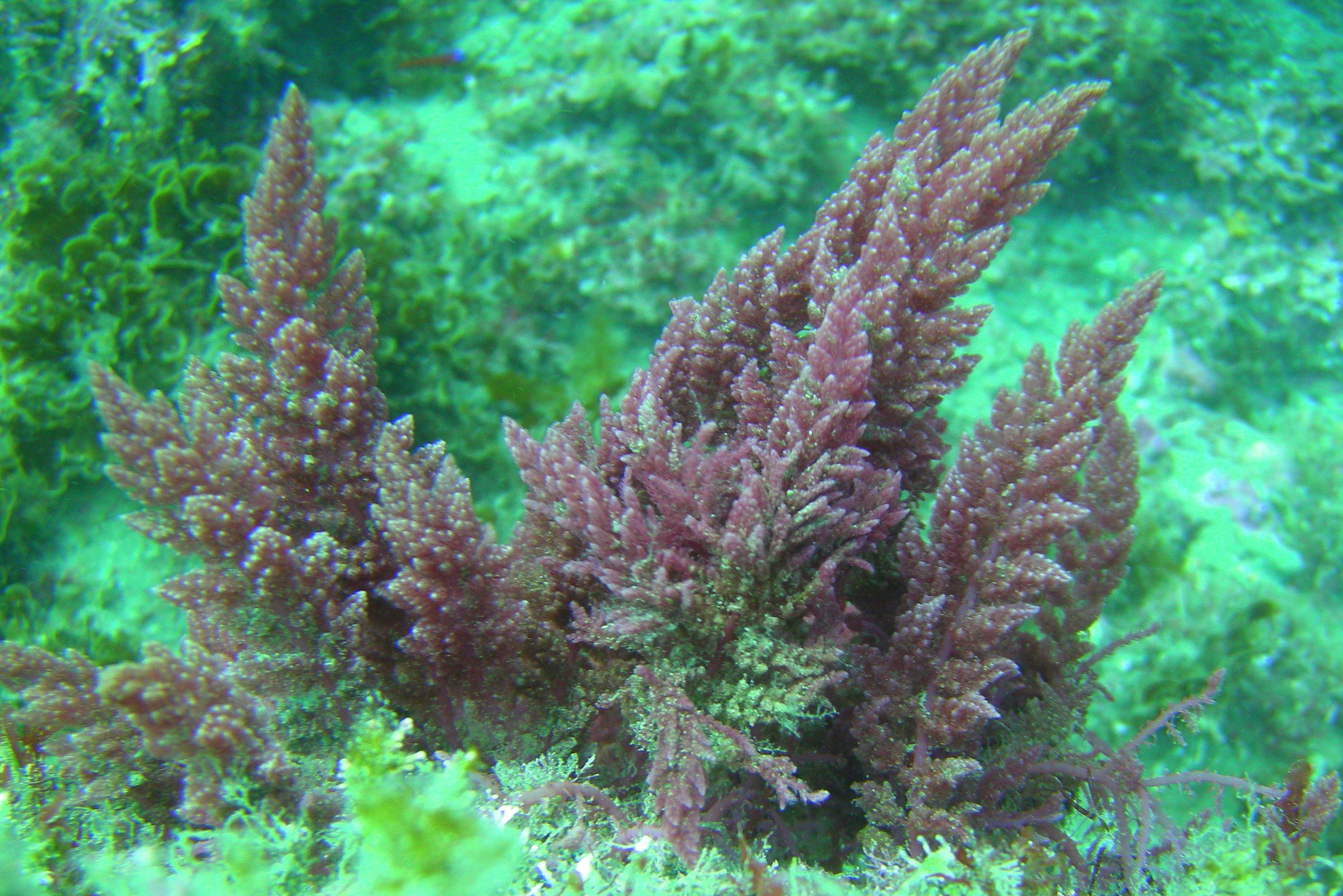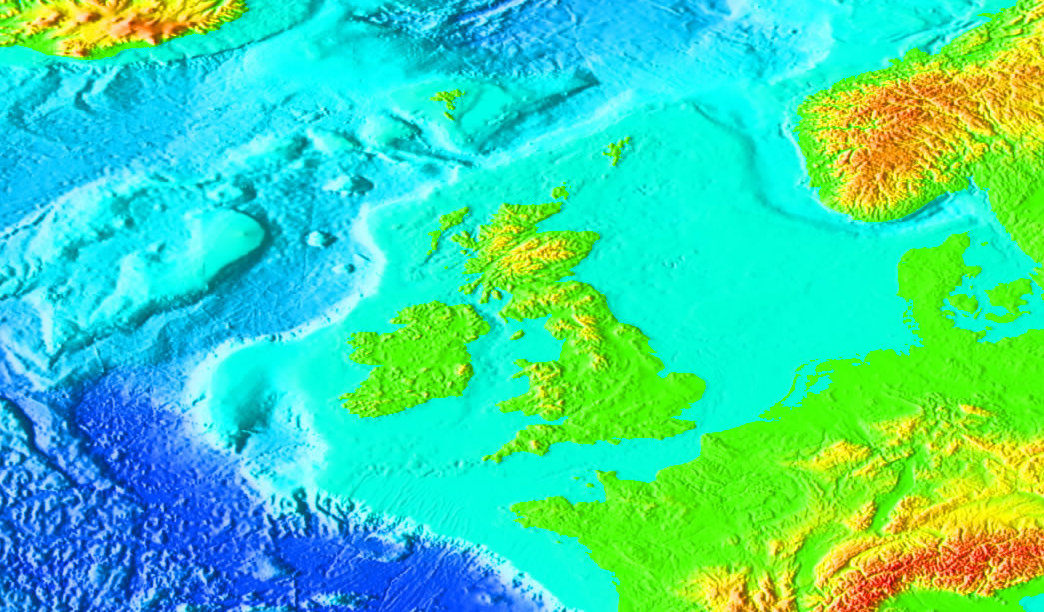|
Polysiphonia Ceramiaeformis
''Polysiphonia ceramiaeformis'', also called banded siphon weed, is a small red algae (''Rhodophyta''), in the genus ''Polysiphonia''. Individuals are irregularly branched with the branches extending up to from a central node and ending in dense tufts of fibres.Maggs, C.A. and Hommersand, M.H. 1993. ''Seaweeds of the British Isles Volume 1. Rhodophyta Part 3A Ceramiales.'' The Natural History Museum, London Description This small red algae lacks a clearly to be seen main axis. Each branch is formed of axial cells with 10 - 12 periaxial cells of equal length, with forcipate incurved tips. It is densely branched and attached by tangled prostrate axes. All axes are ecorticate. The rhizoids are numerous Reproduction The plants are dioecious. The alga bears spermatangial branches on a cylindrical axis. Cystocarps are oval with a narrow ostiole. The tetraspores cells divide to forms cells in fours, these occur in a spiral series. Habitat In pools at low water in sheltered sites. ... [...More Info...] [...Related Items...] OR: [Wikipedia] [Google] [Baidu] |
Red Algae
Red algae, or Rhodophyta (, ; ), are one of the oldest groups of eukaryotic algae. The Rhodophyta also comprises one of the largest phyla of algae, containing over 7,000 currently recognized species with taxonomic revisions ongoing. The majority of species (6,793) are found in the Florideophyceae (Class (biology), class), and mostly consist of multicellular, ocean, marine algae, including many notable seaweed, seaweeds. Red algae are abundant in marine habitats but relatively rare in freshwaters. Approximately 5% of red algae species occur in freshwater environments, with greater concentrations found in warmer areas. Except for two coastal cave dwelling species in the asexual class Cyanidiophyceae, there are no terrestrial species, which may be due to an evolutionary bottleneck in which the last common ancestor lost about 25% of its core genes and much of its evolutionary plasticity. The red algae form a distinct group characterized by having eukaryotic cells without flagella and ... [...More Info...] [...Related Items...] OR: [Wikipedia] [Google] [Baidu] |
Rhodophyta
Red algae, or Rhodophyta (, ; ), are one of the oldest groups of eukaryotic algae. The Rhodophyta also comprises one of the largest phyla of algae, containing over 7,000 currently recognized species with taxonomic revisions ongoing. The majority of species (6,793) are found in the Florideophyceae ( class), and mostly consist of multicellular, marine algae, including many notable seaweeds. Red algae are abundant in marine habitats but relatively rare in freshwaters. Approximately 5% of red algae species occur in freshwater environments, with greater concentrations found in warmer areas. Except for two coastal cave dwelling species in the asexual class Cyanidiophyceae, there are no terrestrial species, which may be due to an evolutionary bottleneck in which the last common ancestor lost about 25% of its core genes and much of its evolutionary plasticity. The red algae form a distinct group characterized by having eukaryotic cells without flagella and centrioles, chloroplasts th ... [...More Info...] [...Related Items...] OR: [Wikipedia] [Google] [Baidu] |
Polysiphonia
''Polysiphonia'' is a genus of filamentous red algae with about 19 species on the coasts of the British Isles and about 200 species worldwide, including Crete in Greece, Antarctica and Greenland. Its members are known by a number of common names.Recorded common names are olann dhearg, craonach, cúnach triosgar, cluaisíní, mileara, millreacha, salata tou yialou (σαλάτα του γιαλού) and lobster horns. It is in the order Ceramiales and family Rhodomelaceae. Description ''Polysiphonia'' is a red algae, polysiphonous and usually well branched, with some plants reaching a length of about 30 cm. They are attached by rhizoids or haptera to a rocky surface or other alga. The thallus (tissue) consists of fine branched filaments each with a central axial filament supporting pericentral cells. The number of these pericentral cells (4–24) is used in identification. ''Polysiphonia elongata'' shows a central axial cell with 4 periaxial cells with cortical cells growing ... [...More Info...] [...Related Items...] OR: [Wikipedia] [Google] [Baidu] |
Rhizoids
Rhizoids are protuberances that extend from the lower epidermal cells of bryophytes and algae. They are similar in structure and function to the root hairs of vascular land plants. Similar structures are formed by some fungi. Rhizoids may be unicellular or multicellular. Evolutionary development Plants originated in aquatic environments and gradually migrated to land during their long course of evolution. In water or near it, plants could absorb water from their surroundings, with no need for any special absorbing organ or tissue. Additionally, in the primitive states of plant development, tissue differentiation and division of labor was minimal, thus specialized water absorbing tissue was not required. The development of specialized tissues to absorb water efficiently and anchor themselves to the ground enabled the spread of plants to the land. Description Rhizoids absorb water mainly by capillary action, in which water moves up between threads of rhizoids and not throug ... [...More Info...] [...Related Items...] OR: [Wikipedia] [Google] [Baidu] |
Dioecious
Dioecy (; ; adj. dioecious , ) is a characteristic of a species, meaning that it has distinct individual organisms (unisexual) that produce male or female gametes, either directly (in animals) or indirectly (in seed plants). Dioecious reproduction is biparental reproduction. Dioecy has costs, since only about half the population directly produces offspring. It is one method for excluding self-fertilization and promoting allogamy (outcrossing), and thus tends to reduce the expression of recessive deleterious mutations present in a population. Plants have several other methods of preventing self-fertilization including, for example, dichogamy, herkogamy, and self-incompatibility. Dioecy is a dimorphic sexual system, alongside gynodioecy and androdioecy. In zoology In zoology, dioecious species may be opposed to hermaphroditic species, meaning that an individual is either male or female, in which case the synonym gonochory is more often used. Most animal species are dio ... [...More Info...] [...Related Items...] OR: [Wikipedia] [Google] [Baidu] |
Cystocarp
A cystocarp is the fruiting structure produced in the red algae after fertilization, especially such a structure having a special protective envelope (as in '' Polysiphonia)''. The structure from which carpospores are released.Maggs, C.A. and Hommersand, M.H. 1993. ''Seaweeds of the British Isles Volume 1 Rhodophyta Part 3A Ceramiales.'' The Natural History Museum, London References {{reflist Algal anatomy ... [...More Info...] [...Related Items...] OR: [Wikipedia] [Google] [Baidu] |
British Isles
The British Isles are a group of islands in the North Atlantic Ocean off the north-western coast of continental Europe, consisting of the islands of Great Britain, Ireland, the Isle of Man, the Inner and Outer Hebrides, the Northern Isles (Orkney and Shetland), and over six thousand smaller islands. They have a total area of and a combined population of almost 72 million, and include two sovereign states, the Republic of Ireland (which covers roughly five-sixths of Ireland), and the United Kingdom of Great Britain and Northern Ireland. The Channel Islands, off the north coast of France, are normally taken to be part of the British Isles, even though geographically they do not form part of the archipelago. Under the UK Interpretation Act 1978, the Channel Islands are clarified as forming part of the British Islands, not to be confused with the British Isles. The oldest rocks are 2.7 billion years old and are found in Ireland, Wales and the north-west of Scotland. Du ... [...More Info...] [...Related Items...] OR: [Wikipedia] [Google] [Baidu] |
Dorset
Dorset ( ; archaically: Dorsetshire , ) is a county in South West England on the English Channel coast. The ceremonial county comprises the unitary authority areas of Bournemouth, Christchurch and Poole and Dorset. Covering an area of , Dorset borders Devon to the west, Somerset to the north-west, Wiltshire to the north-east, and Hampshire to the east. The county town is Dorchester, in the south. After the reorganisation of local government in 1974, the county border was extended eastward to incorporate the Hampshire towns of Bournemouth and Christchurch. Around half of the population lives in the South East Dorset conurbation, while the rest of the county is largely rural with a low population density. The county has a long history of human settlement stretching back to the Neolithic era. The Romans conquered Dorset's indigenous Celtic tribe, and during the Early Middle Ages, the Saxons settled the area and made Dorset a shire in the 7th century. The first re ... [...More Info...] [...Related Items...] OR: [Wikipedia] [Google] [Baidu] |
France
France (), officially the French Republic ( ), is a country primarily located in Western Europe. It also comprises of overseas regions and territories in the Americas and the Atlantic, Pacific and Indian Oceans. Its metropolitan area extends from the Rhine to the Atlantic Ocean and from the Mediterranean Sea to the English Channel and the North Sea; overseas territories include French Guiana in South America, Saint Pierre and Miquelon in the North Atlantic, the French West Indies, and many islands in Oceania and the Indian Ocean. Due to its several coastal territories, France has the largest exclusive economic zone in the world. France borders Belgium, Luxembourg, Germany, Switzerland, Monaco, Italy, Andorra, and Spain in continental Europe, as well as the Netherlands, Suriname, and Brazil in the Americas via its overseas territories in French Guiana and Saint Martin. Its eighteen integral regions (five of which are overseas) span a combined area of ... [...More Info...] [...Related Items...] OR: [Wikipedia] [Google] [Baidu] |
Mediterranean
The Mediterranean Sea is a sea connected to the Atlantic Ocean, surrounded by the Mediterranean Basin and almost completely enclosed by land: on the north by Western and Southern Europe and Anatolia, on the south by North Africa, and on the east by the Levant. The Sea has played a central role in the history of Western civilization. Geological evidence indicates that around 5.9 million years ago, the Mediterranean was cut off from the Atlantic and was partly or completely desiccated over a period of some 600,000 years during the Messinian salinity crisis before being refilled by the Zanclean flood about 5.3 million years ago. The Mediterranean Sea covers an area of about , representing 0.7% of the global ocean surface, but its connection to the Atlantic via the Strait of Gibraltar—the narrow strait that connects the Atlantic Ocean to the Mediterranean Sea and separates the Iberian Peninsula in Europe from Morocco in Africa—is only wide. The Mediterr ... [...More Info...] [...Related Items...] OR: [Wikipedia] [Google] [Baidu] |




